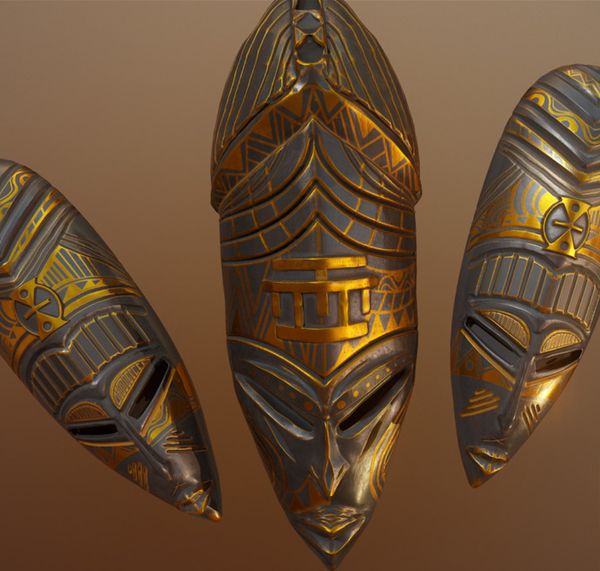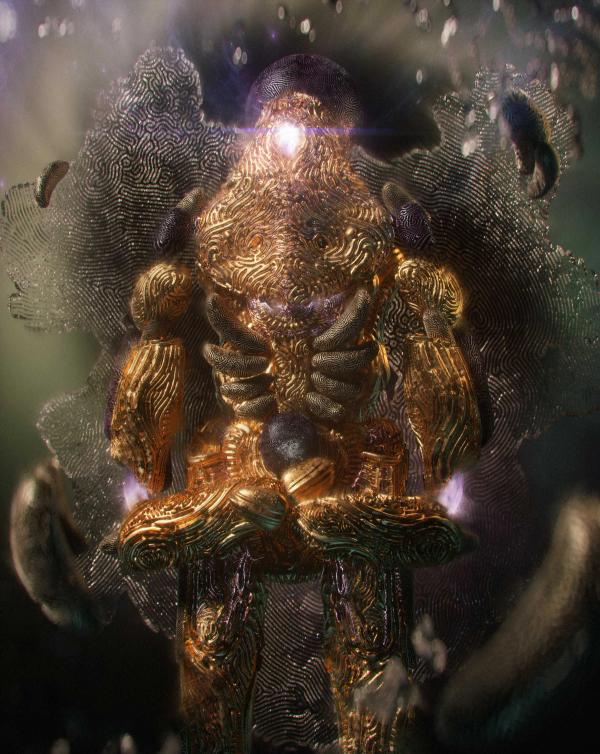Jeryce Dianingana

Jesse: "Wakongo River" has elements of traditional art and futuristic architecture. What were your inspirations in bringing these two aspects together?
Jeryce Dianingana: I'm always thinking about what the future can allow us Africans to build and accomplish. Art is part of us, it is the way we connect with our ancestors, it is the way we share stories and celebrate many events. So how would we celebrate centuries of hard labor when, finally, this city would be ready to be shown to the world? With art. Art that would last forever, that can be seen from any distance—thanking our ancestors, the men and women who raised us and suffered for us. Making the future while being grateful and respectful of our beliefs and parents. Masks, figures, and statues everywhere representing them. And also saying to anyone coming here, “This is Africa.”

J: In what ways is "Wakongo River" a utopia? Why are utopian expressions important for us right now?
JD: Utopian expressions allow us to have hope, to dream. It is personally important for me. I want this for us Africans. With all the bad events that happened on this continent, I think that people need to dream, to evade even if it’s for a minute.
J: Creating a futuristic space like this involves making tough choices about what should be created, how it should be incorporated, and choosing the right lighting—and bringing all these different aspects together to work in harmony. How did you manage these choices?
JD: Sunset, “golden hour” lighting is not always easy to work with, you have to play a lot with silhouettes, all the shapes need to be clearly visible. I spent half of the time on this project, blocking out, experimenting with different compositions for the city. After every iteration I got closer to what I wanted. Taking breaks also was necessary and having a second pair of eyes. I learned to cut ideas to focus less on my 3D technical skills and more on the feeling I wanted to provide. It doesn't always require a lot of complicated shapes to do what you want.
Masks are one of my favorite pieces of art in Africa. I knew that I wanted them as a focal point for this scene. In the same way as New York, I wanted to have a statue, a beacon of hope telling voyagers that everything could be possible in this place. To find this statue I just asked my cousin for a photo of his place and we noticed that this one could fit perfectly in this composition.
“Utopian expressions allow us to have hope, to dream.”
J: How does Substance fit into your process for work like Wakongo River?
JD: In every way. Everything was textured with Substance.

J: What role does planning play in a large environment like "Wakongo River"?
JD: I had a deadline for this project since it was for a competition. If I wanted to make it through, I had to have big dates where I would for example: finish the composition, the first pass of lighting, and all the assets, and many other points to give me enough time to do exactly what I set out to achieve.
It was also the first time I was creating an outdoor environment and city from scratch, the fear of not being able to complete this environment was always present. Planning was a way to feel in control, to be more confident in what I was doing.



